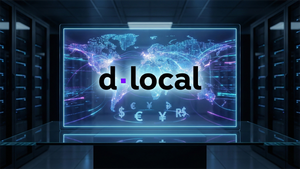
The global financial markets are witnessing an extraordinary surge in precious metals, with both gold and silver achieving unprecedented valuations in 2025. This remarkable rally is fueled by a confluence of persistent geopolitical tensions, inflationary pressures, robust central bank accumulation, and a pivotal shift in the Federal Reserve's monetary policy. Silver, in particular, has demonstrated a potent dual appeal, driven by both its traditional safe-haven status and burgeoning industrial demand from the green energy sector, while gold continues to solidify its role as the ultimate store of value in turbulent times.
As investors navigate an increasingly complex economic landscape, the sustained strength of these metals signals a profound re-evaluation of traditional asset allocation strategies. The immediate implications include a heightened focus on tangible assets as a hedge against volatility, a significant boost to mining companies' profitability, and a potential re-direction of capital flows across various asset classes. The Federal Reserve's recent interest rate cuts have played a crucial role in enhancing the attractiveness of non-yielding assets, setting the stage for continued scrutiny of monetary policy and its ripple effects on the precious metals complex.
Unpacking the Ascent: A Detailed Look at Gold and Silver's 2025 Rally
The year 2025 has been nothing short of spectacular for precious metals. Silver embarked on a remarkable bullish trend, surging from approximately $28.9 per ounce at the year's outset to over $45 by September, marking a staggering 47% year-to-date gain and reaching a 14-year high. In October 2025, spot silver briefly touched an all-time high of $54.49 per ounce, experiencing a "short squeeze" and a liquidity crunch in London, before consolidating around $48-$49 per ounce. This surge is largely attributable to robust industrial demand, especially from the burgeoning solar panel, electronics, and medical device sectors, coupled with persistent supply constraints due to declining ore grades and geopolitical risks.
Gold, the perennial safe-haven, also experienced a historic rally, breaking the $4,200 per ounce barrier in October and reaching an all-time high of $4,381.58. This ascent was underpinned by sustained geopolitical instability, ongoing inflation concerns, and significant accumulation by central banks globally, which are projected to purchase around 900 tonnes in 2025 as they diversify reserves. However, gold's momentum tempered slightly in late October and early November, pulling back to around $3,997.94 per ounce, a 10% decline from its peak.
This moderation was influenced by diminishing expectations for aggressive Federal Reserve interest rate cuts and easing U.S.-China trade tensions, which temporarily reduced immediate safe-haven demand.
The Federal Reserve's monetary policy has been a pivotal factor. The Fed implemented two 25-basis-point rate cuts in September and October 2025, bringing the federal funds rate to a target range of 3.75% to 4.0%. These cuts initially bolstered the precious metals rally by reducing the opportunity cost of holding non-yielding assets and potentially weakening the U.S. dollar. However, cautious remarks from Fed Chair Jerome Powell, indicating that further cuts are data-dependent, led to a recalibration of market expectations and some profit-taking in the metals. Despite short-term volatility, the long-term outlook for gold and silver remains bullish, with analysts citing continued central bank buying and persistent global uncertainties as fundamental supports.
Miners and Manufacturers: Winners and Losers in the Precious Metals Boom
The current environment of elevated gold and silver prices, while volatile, generally presents a highly favorable scenario for publicly traded mining companies and a mixed bag for industrial users.
Winners:
- Mining Companies: Gold and silver mining companies are direct beneficiaries of rising metal prices. Major players like Newmont Corporation (NYSE: NEM), Barrick Gold Corporation (NYSE: GOLD), Agnico Eagle Mines Limited (NYSE: AEM), and Alamos Gold Inc. (NYSE: AGI) in the gold sector, alongside primary silver producers such as Pan American Silver Corp. (TSX: PAAS), Hecla Mining Company (NYSE: HL), and First Majestic Silver Corp. (NYSE: AG), are seeing significant boosts to their revenues and profitability. Higher metal prices improve profit margins due to operational leverage, as production costs tend to be relatively stable. For instance, Alamos Gold experienced a 47% year-on-year increase in Q4 revenues in 2024, largely due to higher realized gold prices, and its adjusted net earnings rose 110%. These companies also benefit from increased valuations of their reserves, making previously uneconomic deposits viable. Strong cash flows enable debt reduction, increased dividend payouts, and expanded exploration budgets, potentially leading to new discoveries and extended mine life. Streaming companies like Wheaton Precious Metals Corp. (NYSE: WPM) also thrive, as their agreements often guarantee purchases at fixed, lower prices, increasing their margin as spot prices rise.
- Precious Metals Refiners and Dealers: Companies involved in the refining and trading of gold and silver, such as those within Umicore SA (EBR: UMI) or Glencore International AG (LSE: GLEN), experience increased activity and demand for their services.
Losers/Challenged:
- Jewelry Industry: Soaring gold and silver prices directly translate to higher material costs for the jewelry industry. Retailers face increased production expenses, which are then passed on to consumers, potentially leading to sharp price adjustments and a decline in discretionary consumer spending on jewelry.
- Electronics and Green Technology Manufacturers: Industries heavily reliant on silver as an input, such as solar panel manufacturers, electric vehicle (EV) producers, and electronics companies, face escalating material costs. While silver is indispensable for these technologies, its rising price and potential supply shortages could impact manufacturing costs, product pricing, and ultimately, profit margins. Companies in these sectors may need to explore hedging strategies or invest in recycling initiatives to mitigate cost pressures.
Overall, mining companies are experiencing a highly favorable period, allowing them to strengthen balance sheets and invest in future growth, while downstream industries must adapt to higher input costs.
Broader Implications: A Shifting Global Financial Landscape
The current dynamics in the silver and gold markets are not isolated events but rather integral parts of broader industry trends, signaling significant ripple effects across various sectors and demanding attention to regulatory and policy implications.
These precious metal surges fit squarely into a global de-dollarization trend, where central banks, particularly in emerging markets, are actively diversifying their foreign exchange reserves away from the U.S. dollar. Gold serves as the primary alternative, creating sustained buying pressure and reflecting a long-term shift in confidence towards tangible assets and a more multipolar global financial system. The ongoing geopolitical instability, from conflicts in Ukraine and the Middle East to trade disputes, further accelerates this trend, driving nations and investors alike to seek safe havens.
For other investment assets, the strong appeal of gold and silver as hedges against economic uncertainty and inflation can divert capital from traditional assets like stocks, bonds, and even cryptocurrencies, especially when real interest rates are low or negative. This could lead to underperformance in these competing asset classes. Within precious metals, while gold and silver shine, other platinum group metals (PGMs) like palladium face different dynamics, with declining automotive demand impacting their outlook, while platinum shows potential for investment demand.
The "Green Economy" is a particularly significant driver for silver. Often dubbed the "green metal," silver is critical for technologies underpinning the energy transition, including solar panels, electric vehicles, and 5G infrastructure. The solar industry alone is a massive consumer, and the demand from EVs, which use significantly more silver than traditional vehicles, is rapidly growing. This structural demand ensures silver's long-term relevance, but also poses challenges for manufacturers regarding supply security and cost management.
Regulatory bodies such as the LBMA, FATF, SEC, and CFTC are intensifying their focus on market transparency, integrity, and anti-money laundering (AML) protocols given the high value of precious metals. Furthermore, there's a growing emphasis on Environmental, Social, and Governance (ESG) criteria within the mining sector. Companies are under pressure to adopt sustainable practices, reduce emissions, and ensure ethical sourcing, which can impact operational costs but also enhance reputation and access to "green" financing. Historically, precious metals have consistently acted as hedges during periods of high inflation and geopolitical turmoil, drawing parallels to the 1970s gold bull market and the aftermath of the 2008 global financial crisis. While current conditions share these drivers, the unprecedented industrial demand for silver in green technologies adds a unique dimension to this cycle.
What Lies Ahead: Navigating the Future of Precious Metals
The outlook for silver and gold markets remains largely bullish, though the path forward is expected to be dynamic, shaped by continued Federal Reserve actions, evolving geopolitical landscapes, and the accelerating industrial demand for silver.
In the short-term, gold may experience some consolidation after its record run, with prices fluctuating around the $4,000 mark. Analysts project gold to average around $3,675 per ounce by Q4 2025 and potentially climb towards $4,000 by mid-2026. Silver, while also subject to volatility, is expected to maintain a cautiously bullish bias, with forecasts ranging from $28-$32 to $48-$52 per ounce for 2025, and some anticipating it could reach $65 in 2026.
Long-term possibilities for both metals are even more optimistic. Gold is projected to gradually rise towards $7,000 per ounce by 2030, with some extreme scenarios suggesting $10,000 to $14,372 by 2040-2050, driven by persistent inflation, central bank demand, and geopolitical risks. Silver's long-term outlook is particularly bright due to its indispensable role in the green energy transition. Analysts suggest it could surpass $50 by 2030, with some predicting it could touch $49 in 2025, consolidate around $50 in 2026, move closer to $77 in 2027, and potentially peak around $82 by 2030, especially if it decisively breaks and holds above the psychological $50 barrier.
Strategic pivots for investors include maintaining diversified portfolios with exposure to both gold and silver as hedges against economic downturns and inflation. Investment vehicles like physical metals, ETFs, and mining stocks offer various avenues for exposure. Companies, particularly industrial users of silver, must adapt by securing supply chains, potentially through increased inventory or reshoring, and considering hedging strategies to manage input cost volatility.
Market opportunities are abundant, stemming from sustained safe-haven demand, gold's role as an inflation hedge, and silver's critical function in the green economy. The current gold-silver ratio also suggests silver may be undervalued, presenting a potential "catch-up" opportunity. However, challenges include price volatility, potential shifts in monetary policy (e.g., unexpected hawkish turns from the Fed), and global economic slowdowns that could reduce industrial demand for silver.
Potential scenarios range from a strong bullish outcome if geopolitical tensions escalate and central banks maintain accommodative policies, pushing gold towards $4,500-$5,000 and silver towards $100; to a moderate growth scenario with steady appreciation; or a correction/consolidation if economic data strengthens significantly, leading to profit-taking.
Wrap-up: Enduring Significance and Investor Vigilance
The year 2025 has unequivocally reaffirmed the enduring significance of gold and silver as fundamental stores of value in a world grappling with profound economic and geopolitical shifts. Both metals have not only achieved historic price levels but have also demonstrated their critical roles as hedges against inflation, currency debasement, and systemic risks. The substantial and ongoing accumulation of gold by central banks, particularly from emerging economies, signals a structural reorientation in global reserve management that is likely to have a lasting impact on the financial landscape for years to come. Silver's dual identity as both a monetary asset and an indispensable industrial commodity further cements its unique demand patterns and importance in diversified investment portfolios.
Moving forward, the market remains poised for continued strength, though investors must exercise vigilance and adaptability. The fundamental drivers that propelled these metals to record highs — persistent geopolitical uncertainties, the long-term threat of inflation, and central bank diversification — are not expected to dissipate quickly. For silver, the accelerating global transition to green energy technologies provides an additional, powerful demand catalyst that is set to reshape its market dynamics for decades.
Investors should closely watch several key indicators in the coming months:
- Federal Reserve Actions: The pace and extent of future interest rate decisions by the Federal Reserve will be paramount. Further rate cuts would generally bolster precious metals by reducing the opportunity cost of holding non-yielding assets and potentially weakening the U.S. dollar. Any hawkish shifts or unexpected strengthening of the dollar could, however, create headwinds.
- Global Economic Indicators: Monitor inflation trends, as persistent inflationary pressures will continue to drive demand for gold and silver as hedges. Global economic growth data is also crucial; while gold thrives as a safe haven during slowdowns, a robust recovery could particularly boost silver's industrial demand.
- Geopolitical Developments: Any escalation or de-escalation of global conflicts and political instabilities will directly influence safe-haven demand for both metals.
- Industrial Demand for Silver: Keep a close eye on the growth trajectory of key industrial sectors that heavily utilize silver, such as solar energy, electric vehicles, and electronics. Strong expansion in these areas will provide a significant floor and continued upward momentum for silver prices.
- Central Bank Activity: The continued volume and pace of central bank gold purchases, particularly from emerging markets, will be a critical indicator of sustained structural demand.
In conclusion, the gold and silver markets are at a fascinating juncture. While some short-term consolidation is a natural part of any bull market, the underlying fundamental drivers suggest a sustained bullish trajectory for both metals. Investors who remain attuned to the interplay of monetary policy, global economics, and evolving industrial demand will be best positioned to navigate these dynamic and historically significant markets.
This content is intended for informational purposes only and is not financial advice







